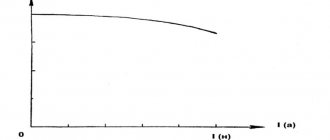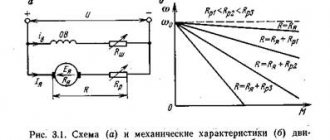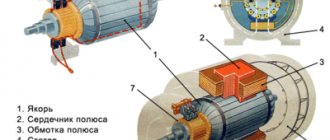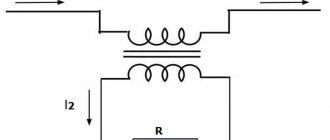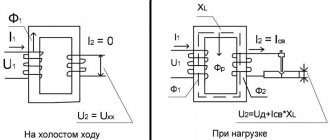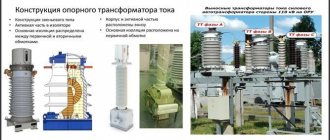DC amplifiers: operating principle and design
An amplifier is called a direct current amplifier (DCA) if it can amplify constant and slowly changing signals.
Such an amplifier can also be used to amplify variable signals. The above discussed operational amplifiers, which are direct current amplifiers. But the internal structure of operational amplifiers was not considered.
Vasiliev Dmitry Petrovich
Professor of Electrical Engineering, St. Petersburg State Polytechnic University
Ask a Question
In order for constant or slowly varying signals to be transferred from the input of an amplifier to its output, only galvanic connections between the individual parts of the amplifier must be used or these signals must be converted to variable ones.
The resulting AC signals can be amplified using AC amplifiers, in which the galvanic connections are broken using capacitors or transformers.
After amplification, variable signals must be converted to constant or slowly varying signals.
When constructing a UPT using galvanic coupling between cascades, a UPT is obtained, which is characterized by such a harmful phenomenon as zero drift. Zero drift is understood as a spontaneous change in the output voltage while the input voltage remains unchanged. The main reasons for amplifier zero drift are:
- changing the parameters of circuit elements, primarily transistors, due to changes in ambient temperature;
- change in supply voltages;
- constant change in the parameters of active and passive circuit elements caused by their aging.
The zero drift signal can be commensurate with the useful signal, therefore, when constructing the UPT, measures are taken to reduce the zero drift.
The main measures to reduce drift are:
- strict stabilization of amplifier power supplies;
- use of negative feedback;
- application of balanced compensation schemes of UPT;
- the use of elements with a nonlinear dependence of parameters on temperature to compensate for temperature drift;
- use of UPT with intermediate conversion, etc.
An important issue when constructing a UPT is also matching the potentials of neighboring stages, matching the input signal source with the UPT, as well as connecting the load to the UPT in such a way that at zero input voltage, the voltage at the load is also zero.
Therefore, the simplest UPTs, consisting of several cascades connected in series and connected by galvanic (direct) coupling, even if the potentials are matched, have a number of disadvantages, the main one of which is zero drift.
Thus, to eliminate the above-mentioned shortcomings, UPTs are built in the form of parallel-balanced cascades, which are a balanced bridge, one arm of which includes a load, and the other a power source. The diagram of such a UPT is shown in Fig. 2.35.
Collector resistances RK1 and RK2, transistors T1 and T2, resistor Re form a bridge, to one diagonal of which the power source EK is connected, and to the other diagonal - between the collectors of the transistors - the load is switched on.
Abrahamyan Evgeniy Pavlovich
Associate Professor, Department of Electrical Engineering, St. Petersburg State Polytechnic University
Ask a Question
With zero input signals and complete symmetry of the circuit (RK1 = RK2, T1 and T2 are the same), the collector potentials of transistors T1 and T2 are the same and uout, equal to u K1—uK2, is equal to zero.
The high stability of the circuit is explained by the fact that when the voltage of the power supply changes or when the parameters of the transistors change identically (for example, due to temperature), the potentials of both collectors receive equal increments and, therefore, the output voltage remains equal to zero.
In real circuits there is always some asymmetry of the arms and there is some zero drift, although it is much less than in other circuits.
The input signal in this circuit can be applied either between the bases, or to one of the bases at a fixed potential of the other.
Vasiliev Dmitry Petrovich
Professor of Electrical Engineering, St. Petersburg State Polytechnic University
Ask a Question
By presenting Re as two parallel-connected resistances of double the value (see the dotted line in Fig. 2.35), you can see that the UPT under consideration is two cascades with emitter stabilization, combined accordingly (see vertical dividing lines).
By connecting an additional source Ee in series with Re, it is possible to ensure such an initial operating mode of the transistors in which the input potentials are equal to zero and, therefore, it is possible to remove the resistance of the dividers R1, R2, R3, R4 from the circuit. The result is a differential amplifier circuit.
4.13. Amplification of DC and AC voltage and current
Amplification of direct and alternating voltages and currents can be obtained using nonlinear controlled elements and additional sources. Accordingly, a DC amplifier uses additional DC sources, and an AC (voltage) amplifier uses additional AC current (voltage) sources. Such amplifiers can be represented as active four-terminal networks (Fig. 4.77).
In amplifiers, small input increments di1 correspond to large output increments di2. If the attitude
amplifier Y is said to be a current amplifier. Or for voltages: du2/du1 = Ku > 1 – voltage gain.
The product of the coefficients Ki and Ku determines the power gain:
If the increments di and du at the input or output change slowly over time, then we are talking about constant current or voltage amplifiers. Then in the stationary state of the amplifier the current ratio is:
Requirements for current shunt signal amplifiers depending on the connection circuit
The main method of current control, characterized by high accuracy and low cost, is based on measuring the voltage drop across a low-resistance resistor (current shunt) connected in series with the load.
Depending on the application conditions of the current sensing circuit (protection, monitoring or control), the current shunt can be connected either between the power supply and the load (power bus current measurement) or between the load and ground (ground bus current measurement). Figure 4 shows circuits that implement both current measurement methods, and Table 1 compares them.
Rice. 4. Current measurement using an RS shunt: a) in the power bus; b) in the earth tire
Table 1. Comparison of methods for measuring current in the power and ground buses
| Comparison criteria | Power Bus Current Measurement | Ground bus current measurement |
| Connection diagram to the current sensor | Symmetrical | Symmetrical or asymmetrical |
| Effect of interference on the ground bus | No | Eat |
| Common Mode Voltage | At bus voltage level | At ground level |
| Common Mode Rejection Ratio (CMRR) Requirements | High | Low |
| Load short circuit detection capability | Eat | No |
Many developers use current measurement in the ground bus due to the low cost of implementing this method. Figure 5a shows a current sensing circuit using an op-amp in a single-ended circuit. This version of the measuring circuit is characterized by ease of implementation and minimal cost, but its significant drawback is low accuracy due to the presence of parasitic resistances and the influence of temperature coefficients of resistor resistance on the gain. Another disadvantage of measuring ground bus current is the inability to detect load faults.
Rice. 5. Circuits for measuring current in the ground bus, implemented on the op-amp: a) asymmetrical; b) symmetrical
To reduce the influence of parasitic elements and ground bus noise on the accuracy of current measurement, you can use a symmetrical (differential) op-amp circuit shown in Figure 5b. The accuracy of measurements in such a circuit will be determined by the common mode rejection ratio (CMRR) and op-amp drift, as well as the accuracy of the matching of the resistors that set the gain. However, the cost of implementing this option will be significantly higher when using an op-amp with a large CMRR and low drift.
To address current measurement accuracy challenges, TI offers specialized current shunt signal amplifiers, including the INA180 , which combines high accuracy and low cost. The INA180 chips have a wide bandwidth (up to 350 kHz) and a slew rate of 2 V/µs, which allows them to be used in DC regulators, power supplies and motor drivers. Figure 6 shows the basic circuit diagram of the INA180 current shunt signal amplifier.
Rice. 6. Basic circuit diagram for connecting the INA180 current shunt signal amplifier
The choice of where to connect the current-measuring shunt depends on the functional purpose of the current measurement circuit and the specific conditions of its application. Ground bus current measurement is preferable for use in devices where cost is a significant factor, the device does not require load short detection, and the level of ground bus noise does not degrade measurement accuracy. It is advisable to use current measurement in the power bus when it is necessary to detect a load short circuit, as well as when there is a significant level of noise in the ground bus. Compared to dedicated current shunt signal amplifiers, discrete-element current sensing circuitry has limited accuracy, a larger area required to accommodate the elements on the circuit board (Figure 7), and a higher cost for the same accuracy class. The use of a specialized chip made it possible to reduce the total area on the printed circuit board occupied by components by 70%.
Rice. 7. Comparison of implementation options for a current control circuit using discrete elements, an op-amp and a comparator (a) and a specialized INA300 microcircuit (b)
Power bus current sensing solves the problems associated with load fault detection and ground bus noise, but requires amplifiers that can withstand high common mode voltages. The problem of protecting the current-measuring circuit from common-mode voltages, as well as the need to improve accuracy characteristics and search for price compromises, are prompting developers to look for a replacement for traditional measuring circuits using discrete elements. The ideal solution in this case is specialized current shunt signal amplifiers that combine high accuracy, low cost and the ability to work with large common-mode voltages, just like the INA180 line of chips . These amplifiers are capable of operating with common-mode voltages up to 26 V and combine improved performance, minimal PCB footprint, flexible current sensing circuit design, and optimal cost for low-end devices.
Main characteristics of the INA180 line:
- common mode voltage range (VCM): –0.2…26 V;
- wide bandwidth: 350 kHz;
- maximum bias voltage:
- ±150 µV at VCM = 0 V;
- ±500 µV at VCM = 12 V.
- output voltage slew rate: 2 V/µs;
- accuracy:
- maximum gain error ±1%;
- maximum temperature drift of offset voltage 1 µV/°C.
- gain:
- 20 V/V (index A1);
- 50 V/V (index A2);
- 100 V/V (index A3);
- 200 V/V (index A4).
- current consumption: 260 µA.

